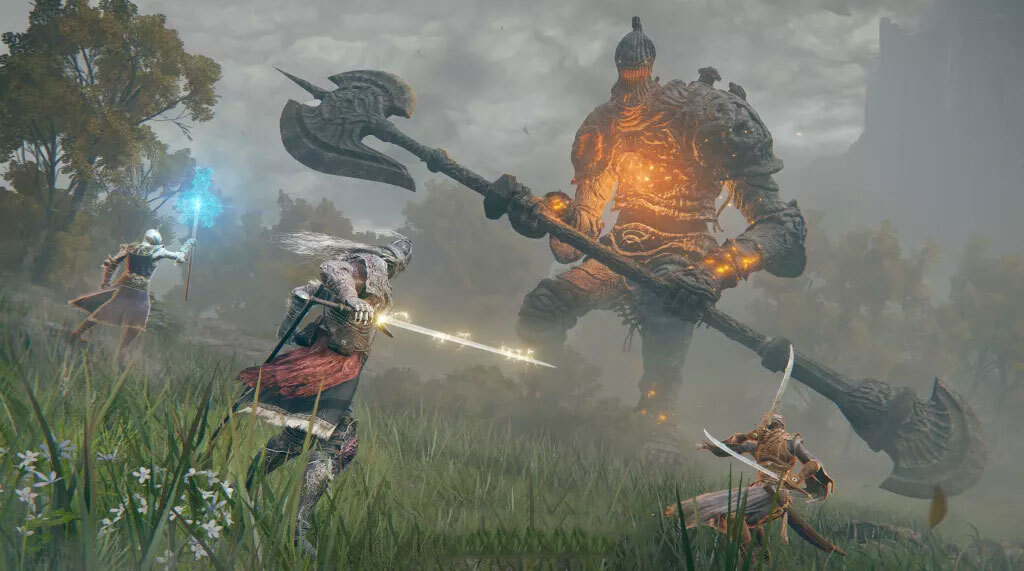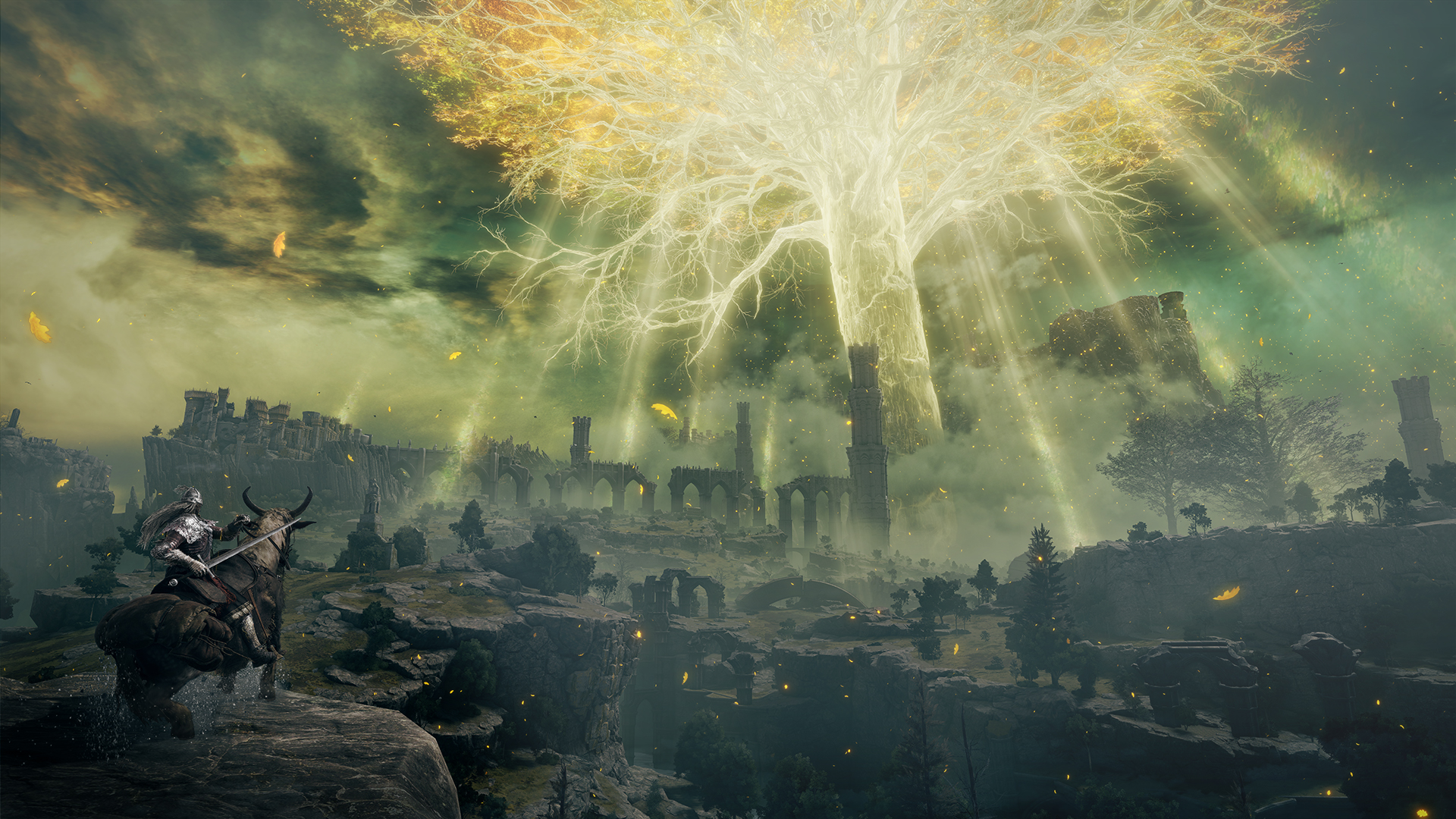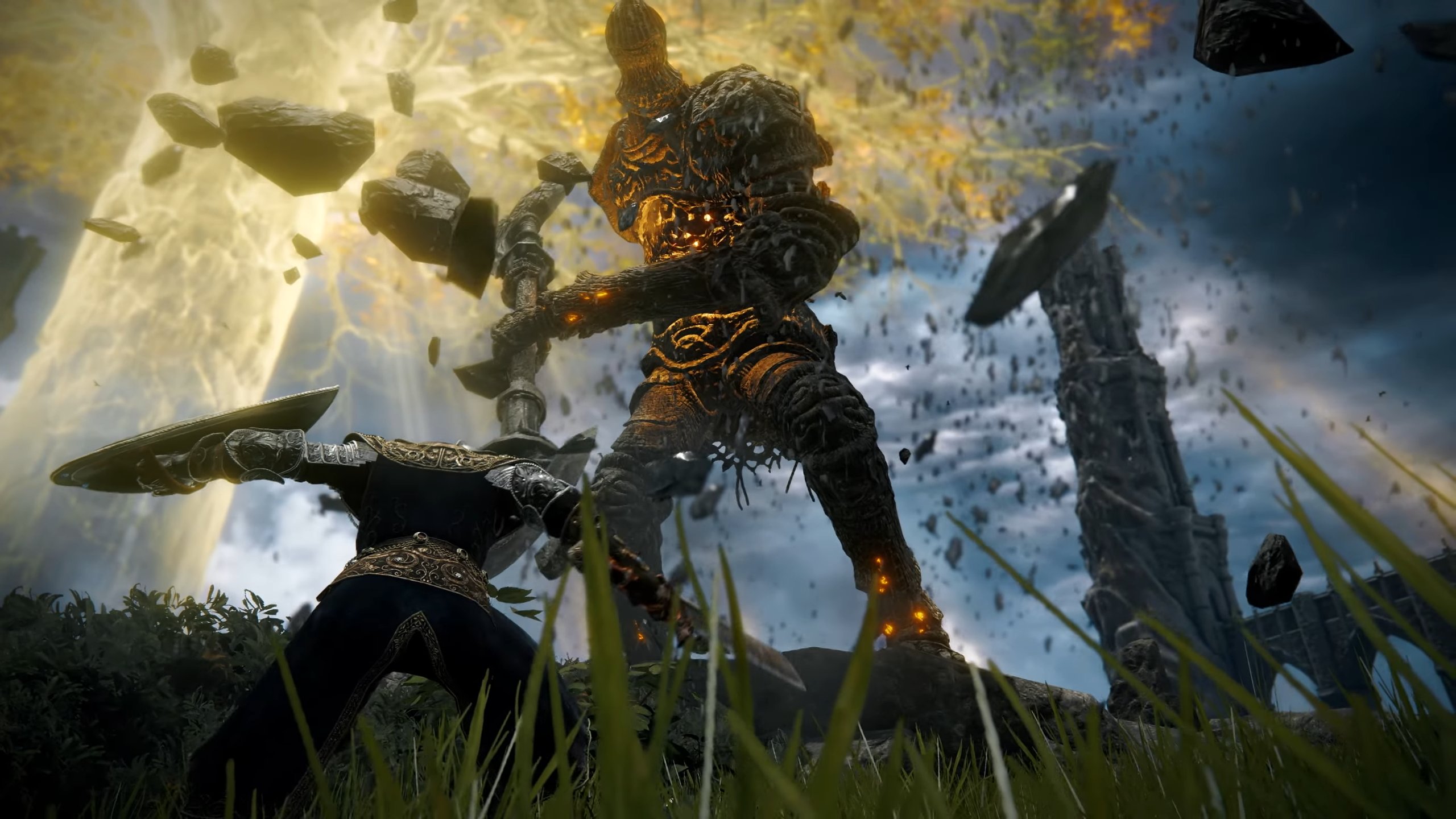Elden Ring lives up to its 'open world Dark Souls' promise

Update: Elden Ring is a brilliant but also frustrating.
The very first enemy I encountered in Elden Ring obliterated me. I don’t mean that I lost after a pitched battle, or that I made a series of catastrophic mistakes. I mean that I emerged from a darkened building, having completed the bare bones of a tutorial, and an enormous knight rode up and destroyed me with three flicks of his lance.
I assumed that this would be the game’s first friendly NPC. Clearly, I assumed wrong. The Tree Sentinel dispatched with nary an effort, and I was back to square one. But I quickly got used to it. Square one is where you’ll spend a lot of time in Elden Ring.
For those who haven’t kept up with it, Elden Ring is the latest action/RPG by Dark Souls developer FromSoftware. From games are generally difficult, minimalistic and gorgeous, with tight gameplay and atmospheric stories. In that respect, Elden Ring is no different. But what sets this game apart from its predecessors is that it takes place in a huge, mostly open world, rather than a series of confined levels.
My time with Elden Ring was short, as I played for only a few hours at a time during a network test on the weekend of Nov. 13. But so far, the game is shaping up to be exactly what the developers promised: an open-world take on the Dark Souls formula, with plenty of areas to explore, secrets to uncover and dangerous enemies to fight.
The Dark Souls of open-world games

What surprised me most about Elden Ring was that, in spite of its significant structural differences, the moment-to-moment gameplay is almost identical to the Souls games that came before it. You’ll still choose a character class (I chose one called Bloody Wolf; this was an enormous mistake), equip weapons and armor, explore every corner of a secret-laden world and do battle with obscenely tough enemies. Mastering combat is an analytical grind, slowly learning enemy patterns and weaknesses to best opponents. You’ll also gather resources from fallen foes, which you can use as either experience points to improve certain attributes, or currency to buy new gear. Called Runes this time around, they’re essentially the same as Souls or Blood Echoes.
Where Elden Ring differentiates itself from other "Soulsborne" games is in its world design. When I stepped out of the game’s first cavern, a gorgeous grotto brimming with eerie blue lights and glimmering golden trees, I saw a large, verdant field, open in every direction. I could have climbed a nearby hill, doubled back to look behind a crumbling castle or gone far afield to see what lay at the opposite end of the level. Since the network test lasted only a few hours, I decided to stick to the game’s suggested path, although, even this was not as straightforward as it seemed.
Get instant access to breaking news, the hottest reviews, great deals and helpful tips.
After my mauling by the Tree Sentinel, I decided to steer clear of enemies until I found something that looked a little smaller and more manageable. After finding the game’s actual first friendly NPC, I learned that my goal was to infiltrate a castle on top of a nearby mountain. All I had to guide me was a small golden sparkle, which points the way from one Site of Grace to the next. (Sites of Grace are like bonfires. For non-Souls fans, places where you can recover your health potions, access inventory storage, level up and so forth.)
Just like previous Souls games, Elden Ring doesn’t really tell you where to go, relying instead on subtle level design and mild hints from NPCs. My first attempt to climb the mountain and find the castle ended with a significant detour. I found a few undead worshippers milling around a cave entrance, and found that I could take them on easily. The cave wound into the mountain, and I reasoned it might take me to into the bowels of the castle.
After fighting my way through a swarm of hard-hitting monsters that looked like kappa demons, I encountered my first Elden Ring boss: the Burial Tree Watchdog. Here, I learned firsthand that Bloody Wolf was probably not the right choice to lead me through the early game. While Bloody Wolf characters excel at melee combat, my powerful bastard sword could barely scratch the Watchdog. Furthermore, its unpredictable attack pattern and hard-hitting tail swipes made it tough to block or dodge consistently.
Elden Ring, like the Soulsborne games, also lets you leave messages for other players. Every warning outside of the Watchdog’s chamber advised me to use magic. Even though I had selected a class without magic spells, I could have learned one easily enough by leveling up and increasing the relevant attributes. However, I didn’t yet have the ability to level up, and I was convinced that the Watchdog was the only thing standing in my way.
Frustration and intuition

Once I finally bested the Watchdog, however, I had two startling realizations: First, I was no closer to the castle, as the only way to proceed was to teleport back to the beginning of the dungeon. Second: I still had no way to spend all my hard-earned Runes on leveling up.
That’s when I realized how exploration can be a double-edged sword in Elden Ring. I had found a worthwhile side activity through careful exploration, and reaped three important rewards: Runes, equipment and the satisfaction of beating a tough boss. (For all we grouse about them, I would wager that most Soulsborne players are here primarily for the bosses.) At the same time, I was no closer to accomplishing my goal, and I still wasn’t sure where to go next.
After some more trial and error, including another side dungeon and a few more ignominious deaths, I finally encountered Melina: a mysterious woman who could channel my Runes into level-ups. Now, the side dungeons felt a little more rewarding, and each death felt a little less harrowing. After all, if I could spend my Runes frequently, losing a few hundred here and there wasn’t nearly as big of a deal.
After that, I encountered a few more Soulsborne mainstays: groups of armored knights, an undead giant, a pack of wolves and a few helpful items at abandoned campsites. After finally reaching the castle, however, I encountered the one obstacle in Elden Ring that I couldn’t get past: a hideous giant called Margit the Fell Omen.
The boss battle started off tough, as Margit wielded a wicked curved sword, as well as blades of light that he could summon at will. But around halfway through the battle, he also whipped out a huge hammer, and started jumping around the battlefield, chaining together unpredictable combos that I couldn’t consistently block or dodge.
While Margit was a frustrating fight, it also reminded me of something I love about the Soulsborne games, something that Elden Ring embraces too. After about a dozen tries, I realized I wasn’t going to beat Margit with brute strength alone. But I remembered that the undead giant I fought had dropped a Smithing Stone Shard: one component that could help upgrade my sword. Earlier in my travels, I had come across an anvil, which would allow me to upgrade my sword to +3 (anything past that would require a blacksmith).
I realized, belatedly, that the game had already given me my big hint on how defeat Margit. I had all the knowledge I needed; all I had to do was apply a little perseverance. So I started hunting giants, upgrading my weapon and attributes each time I gathered enough runes. After about an hour, I was much more powerful than before, ready to take on Margit again.
The network test ended while I was halfway through my battle with him, kicking me back to the main menu and rendering all my hard work moot.
Still, Margit will still be there when Elden Ring debuts on PS5, PS4, Xbox Series X, Xbox Series S, Xbox One and PC on Feb. 25, 2022. And this time, I think I’ll be able to come prepared.

Marshall Honorof was a senior editor for Tom's Guide, overseeing the site's coverage of gaming hardware and software. He comes from a science writing background, having studied paleomammalogy, biological anthropology, and the history of science and technology. After hours, you can find him practicing taekwondo or doing deep dives on classic sci-fi.
